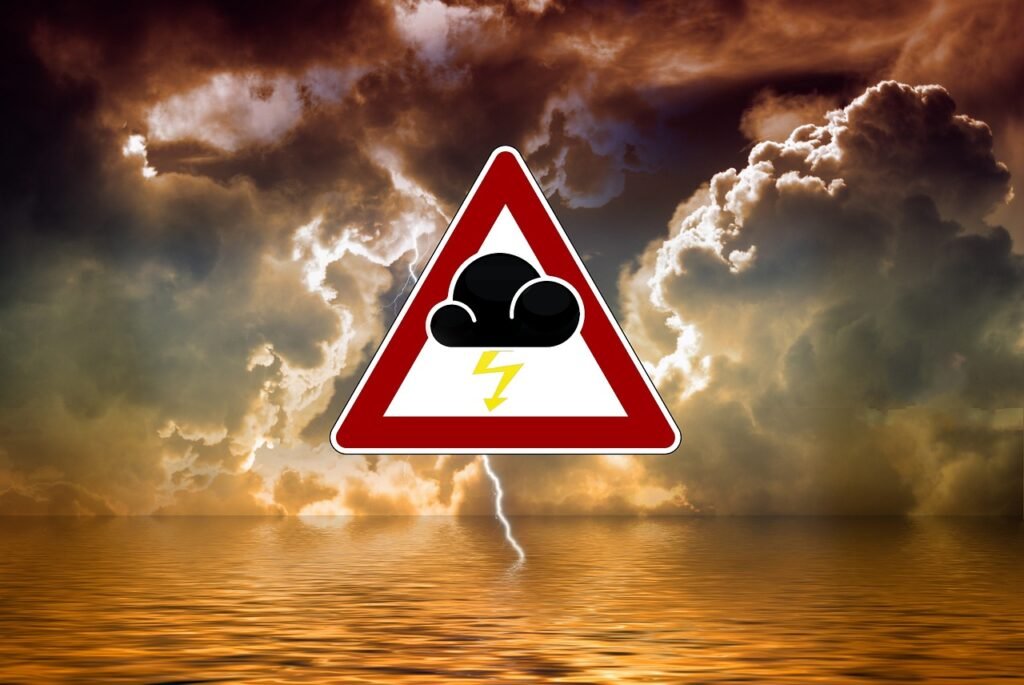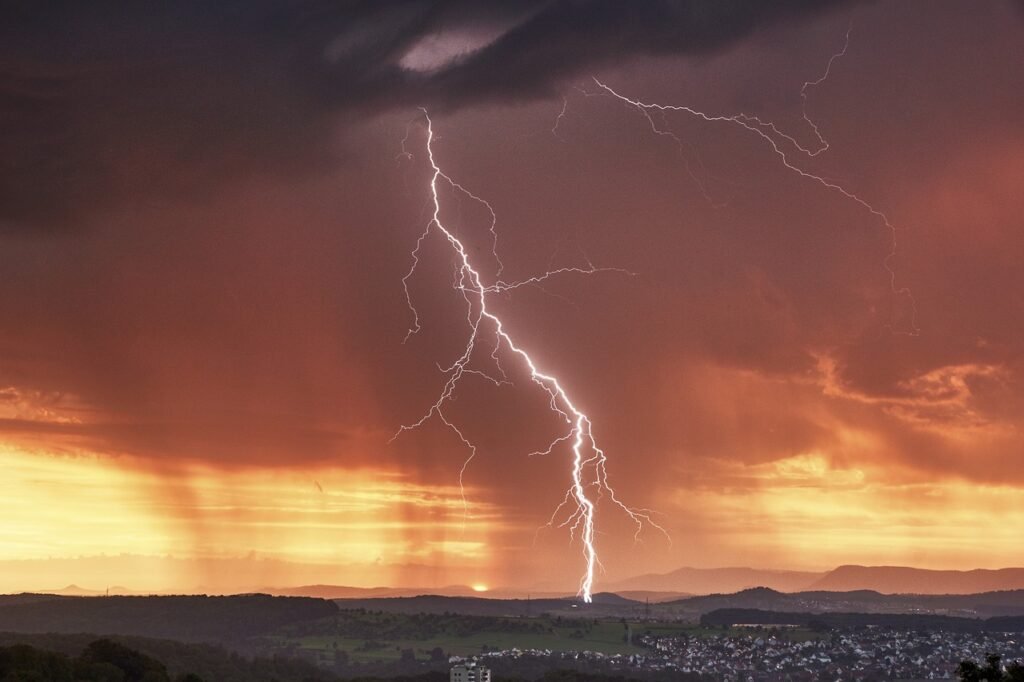Camping is an amazing way to experience the great outdoors, from breathtaking sunrises to peaceful nights under the stars. But sometimes, Mother Nature has different plans, and the weather can change unexpectedly. For first-time campers, the thought of bad weather can be a bit intimidating. What if it rains? What if there’s a storm? What if the wind kicks up or temperatures drop?
The good news is that with a little preparation and the right mindset, you can handle whatever weather comes your way and still have a great time. In this guide, we’ll cover what to do when the weather takes a turn for the worse, how to prepare for it, and what steps to take to stay safe, comfortable, and dry while camping.
1. Always Check the Weather Forecast Before You Go

Before you head out on your camping trip, it’s essential to check the weather forecast for your destination. This will give you a good idea of what to expect and help you pack the right gear.
A) Use Reliable Weather Sources
Apps like AccuWeather, The Weather Channel, or even local weather stations can provide accurate forecasts for your camping area. While no forecast is 100% guaranteed, they’ll give you a good idea of whether you’re likely to encounter rain, wind, or cooler temperatures.
B) Check the Forecast for Multiple Days
Make sure you check the weather for all the days you’ll be camping. Sometimes, weather can be great during the day but change quickly in the evening or overnight.
Personal Experience: The Unexpected Rainstorm
On a recent camping trip, the forecast called for sunny skies the whole weekend. But on the second night, a sudden rainstorm rolled in. I was on a long road trip so I was prepared for any weather but it just goes to show that the weather can be unpredictable! You can never be too prepared.
2. What to Pack for Bad Weather – Preparing Ahead
The best way to handle bad weather is to prepare for it ahead of time. Packing the right gear can make a huge difference in your comfort and safety.
A) Pack Waterproof Gear
Even if the forecast looks clear, it’s always smart to pack waterproof gear, just in case. Here are some essentials to bring:
Waterproof tent: Make sure your tent is rated as waterproof, not just water-resistant. A tent with a rainfly (an extra waterproof layer) will help keep you dry during a rainstorm.
Tarp: Bringing a tarp is one of the best decisions you can make. It can be placed under your tent as a groundsheet to keep moisture from seeping in, or it can be strung above your campsite to create a rain shelter.
Waterproof jacket and pants: A waterproof jacket and pants are must-haves if you’re camping in an area prone to rain. They’ll keep you dry while hiking or moving around the campsite.
Waterproof boots: Wet feet can quickly ruin your trip. Sturdy, waterproof boots will help keep your feet warm and dry, even in muddy or wet conditions.
B) Layer Up for Changing Temperatures
Weather can be unpredictable, especially in the mountains, where temperatures can drop suddenly in the evening. Dressing in layers is the best way to stay comfortable.
Base layer: Start with a moisture-wicking base layer (like synthetic or merino wool) to keep sweat off your skin.
Insulating layer: Add a fleece or down jacket as an insulating layer for warmth.
Outer layer: Finish with a waterproof and windproof outer layer to protect you from rain and wind.
C) Pack Extra Warm Clothing
Even if you’re camping in the summer, temperatures can dip at night. Pack extra warm clothing like hats, gloves, and thermal socks. It’s better to have them and not need them than to be caught without them.
D) Keep Your Gear Dry
Bring dry bags or plastic bags to store your clothes, electronics, and other important items. These will help keep your gear dry even if the weather turns bad.
3. What to Do If It Rains
Rain is one of the most common weather challenges campers face. While a light drizzle can add a peaceful vibe to your campsite, heavy rain can make things difficult if you’re not prepared. Here’s how to stay dry and enjoy your trip, even if the rain starts pouring.
A) Set Up Camp Smartly
Before the rain starts, pick a smart location for your tent. Here’s what to keep in mind:
Choose high ground: Set up your tent on slightly higher ground to avoid water pooling around you. Low spots can quickly become puddles during a rainstorm.
Avoid camping under trees: While it might seem like a good idea to camp under trees for shelter, it’s not always safe. Trees can drop large, wet branches, and dripping water from leaves can make it feel like it’s raining long after the actual rain stops.
B) Create a Rain Shelter
If rain is in the forecast, set up a tarp shelter over your cooking or sitting area. This will give you a dry spot to hang out, cook, or store gear. You can hang a tarp between trees or use poles to keep it elevated.
C) Stay Dry Inside the Tent
Once you’re in the tent, staying dry is key:
Keep wet gear outside: Leave your wet boots and jackets outside the tent (under the rainfly or tarp) to avoid soaking everything inside.
Use a groundsheet (footprint): If your tent doesn’t have a built-in waterproof floor, place a tarp or groundsheet underneath it to prevent moisture from seeping through.
D) Pass the Time
Rainy days can be a great time to relax and enjoy the simple things. Bring along books, card games, or travel-sized board games to pass the time while you wait for the weather to clear up.
Personal Experience: Our Rainy Day
I remember one camping trip where it rained for almost an entire day. Instead of packing up early, my friends and I set up a tarp over the picnic table, pulled out some cards, and made hot chocolate on the camp stove. It ended up being one of the most fun and relaxing parts of the trip! The sound of the rain on the tarp was soothing, and we stayed warm and dry the whole time.
4. What to Do If There’s a Thunderstorm

Thunderstorms can be intimidating when you’re camping, especially if you’re out in the open. But by taking the right precautions, you can stay safe.
A) Avoid Open Areas and Tall Objects
Lightning is most likely to strike tall objects or isolated spots. If you hear thunder or see lightning, follow these safety tips:
Move away from open fields: If you’re camping in an open field, move to a lower area, like a valley or ravine, to minimize your risk of being struck by lightning.
Avoid tall objects: Stay away from tall trees, poles, or other objects that could act as lightning rods.
B) Shelter in Your Car
If you’re near your car and lightning is close, take shelter inside the car with the windows closed. Your car acts as a Faraday cage, which can protect you from lightning strikes.
C) What to Do in Your Tent
While tents don’t offer much protection from lightning, it’s still important to follow these steps:
Avoid metal objects: If you’re in the tent, stay away from metal objects like poles or stakes.
Stay low: If you’re in a thunderstorm while inside your tent, sit or lie down on an insulating pad (like a foam sleeping pad) to reduce your contact with the ground.
5. What to Do If It’s Windy
Strong winds can make camping challenging, especially if your tent isn’t secured properly. Here’s how to handle high winds:
A) Secure Your Tent
Use extra tent stakes: In windy conditions, make sure your tent is securely staked down. Use extra guy lines (ropes that attach the tent to the ground) to stabilize the tent.
Choose a sheltered spot: Set up your tent in a spot that’s naturally sheltered from the wind, such as next to a hill or large rock formation.
B) Avoid Open Fires
Wind can cause campfires to become dangerous quickly. In windy conditions, avoid making an open fire, as sparks can easily blow out of the fire pit and start a wildfire. Use a camp stove instead for cooking in windy weather.
6. What to Do If Temperatures Drop
Cold weather can catch first-time campers off guard, especially if you’re camping at higher elevations or during the shoulder seasons (spring and fall). Staying warm is crucial for both your comfort and safety.
A) Dress in Layers
Layering is the best way to stay warm in changing temperatures. As mentioned earlier, pack a base layer, insulating layer, and outer layer, and don’t forget warm socks, a hat, and gloves for colder nights.
B) Use the Right Sleeping Bag
Your sleeping bag is one of the most important pieces of gear for cold-weather camping. Make sure your sleeping bag is rated for the temperatures you’re likely to encounter. For colder weather, choose a down or synthetic sleeping bag with a lower temperature rating.
Sleeping pad: Don’t forget to use an insulated sleeping pad underneath your sleeping bag to keep cold air from seeping up through the ground.
C) Stay Dry
Staying dry is key to staying warm. Wet clothes can quickly lower your body temperature, so change out of damp clothing as soon as possible and keep a dry set of clothes for sleeping.
7. How to Stay Safe in Extreme Heat
On the other end of the spectrum, extreme heat can be just as dangerous as cold weather if you’re not prepared.
A) Stay Hydrated
When camping in hot weather, staying hydrated is your top priority. Always carry plenty of water, and drink regularly, even if you don’t feel thirsty.
B) Take Breaks in the Shade
Avoid overexerting yourself during the hottest part of the day. Take regular breaks in the shade, wear a hat and light, breathable clothing, and try to set up camp in a shady spot.
C) Avoid Sunburn
Sunburn can make a camping trip miserable. Use sunscreen with a high SPF, and reapply it throughout the day, especially if you’ve been sweating or swimming.
Conclusion: Embrace the Elements
Camping in less-than-perfect weather can be challenging, but it can also lead to some of the most memorable moments of your trip. Whether you’re facing rain, wind, cold, or heat, the key is to be prepared and flexible. By packing the right gear, knowing how to stay safe, and keeping a positive attitude, you’ll be able to handle whatever weather comes your way.
So the next time the clouds roll in or the wind starts to pick up, don’t panic. Embrace the adventure, and remember that part of the fun of camping is learning to work with nature, not against it. With these tips in your back pocket, you’ll be ready to weather any storm (literally!). Happy camping!
Explore more. Fear less.
- Why Road Trips are One of the Best Ways to Clear Your Mind - November 21, 2024
- 10 of the Best Pumpkin Patches in the U.S. - October 23, 2024
- 10 of the Most Colorful Fall Road Trips in the U.S. - October 22, 2024
